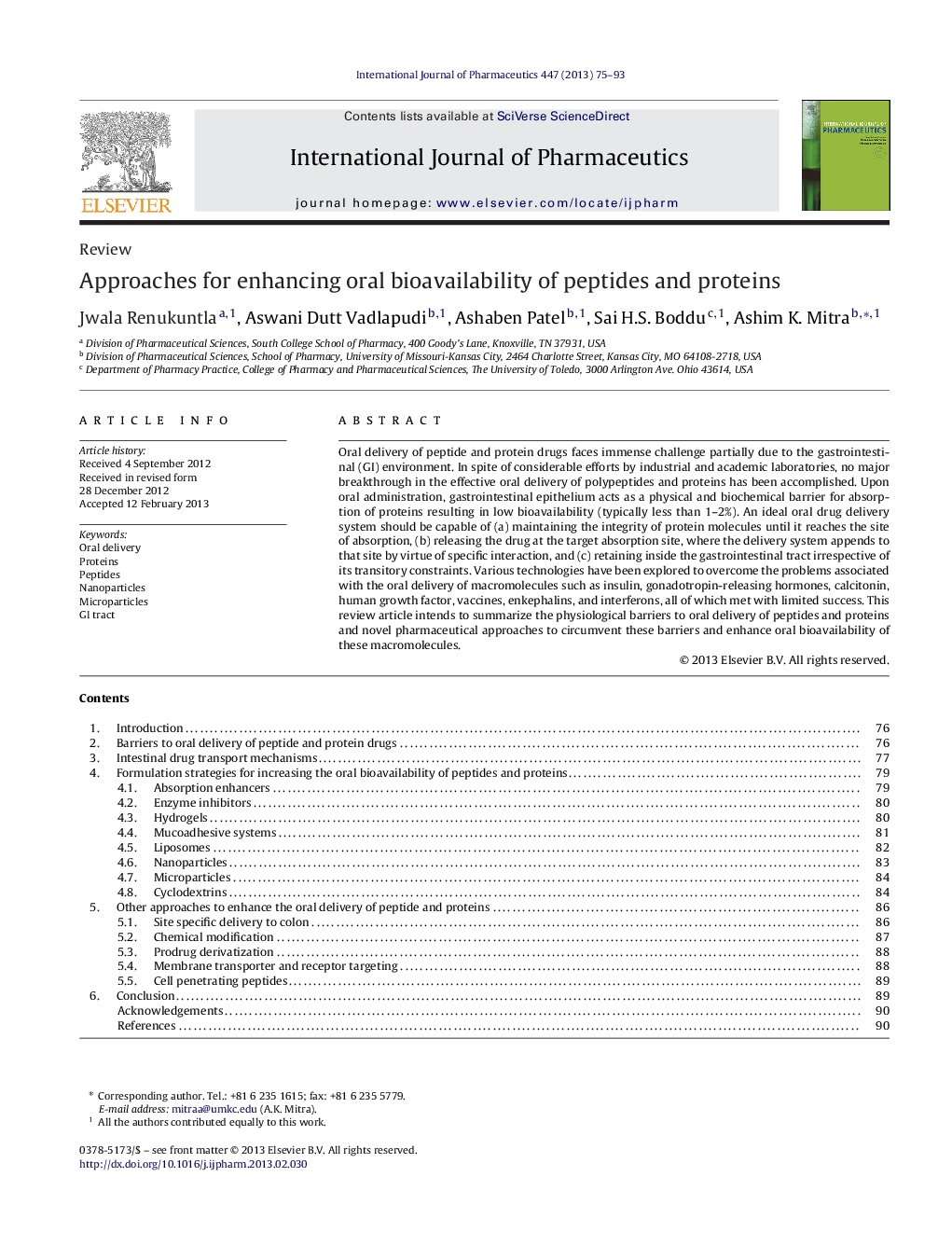| Article ID | Journal | Published Year | Pages | File Type |
|---|---|---|---|---|
| 5820209 | International Journal of Pharmaceutics | 2013 | 19 Pages |
Oral delivery of peptide and protein drugs faces immense challenge partially due to the gastrointestinal (GI) environment. In spite of considerable efforts by industrial and academic laboratories, no major breakthrough in the effective oral delivery of polypeptides and proteins has been accomplished. Upon oral administration, gastrointestinal epithelium acts as a physical and biochemical barrier for absorption of proteins resulting in low bioavailability (typically less than 1-2%). An ideal oral drug delivery system should be capable of (a) maintaining the integrity of protein molecules until it reaches the site of absorption, (b) releasing the drug at the target absorption site, where the delivery system appends to that site by virtue of specific interaction, and (c) retaining inside the gastrointestinal tract irrespective of its transitory constraints. Various technologies have been explored to overcome the problems associated with the oral delivery of macromolecules such as insulin, gonadotropin-releasing hormones, calcitonin, human growth factor, vaccines, enkephalins, and interferons, all of which met with limited success. This review article intends to summarize the physiological barriers to oral delivery of peptides and proteins and novel pharmaceutical approaches to circumvent these barriers and enhance oral bioavailability of these macromolecules.
Graphical abstractDownload high-res image (208KB)Download full-size image
